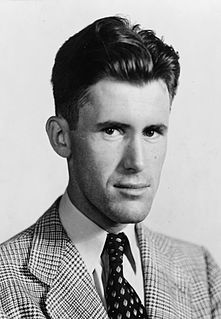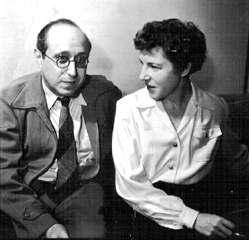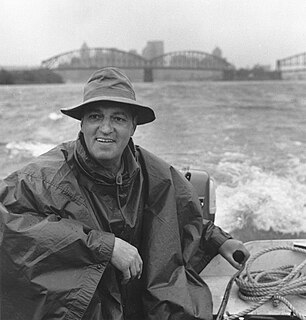Related Research Articles

Roy Emerson Stryker was an American economist, government official, and photographer. He headed the Information Division of the Farm Security Administration (FSA) during the Great Depression, and launched the documentary photography program of the FSA. It hired photographers to travel across the United States and document people in different areas and settings as part of showing the state of people in rural areas in those years. Specific projects were conceived to help assess effects of government programs.

The Farm Security Administration (FSA) was a New Deal agency created in 1937 to combat rural poverty during the Great Depression in the United States. It succeeded the Resettlement Administration (1935–1937).

Gordon Roger Alexander Buchanan Parks was an American photographer, musician, writer and film director, who became prominent in U.S. documentary photojournalism in the 1940s through 1970s—particularly in issues of civil rights, poverty and African-Americans—and in glamour photography.

Elliott Erwitt is a French-born American advertising and documentary photographer known for his black and white candid photos of ironic and absurd situations within everyday settings. He has been a member of Magnum Photos since 1953.

Jack Delano was a Ukrainian immigrant who became an accomplished photographer for the Works Progress Administration, United Fund, and most notably, the Farm Security Administration (FSA). He wore many hats as he also was a composer known for his use of Puerto Rican folk material, started a television production company, and was a cartoonist, poet, moviemaker, professor, and architectural designer.
Documentary photography usually refers to a popular form of photography used to chronicle events or environments both significant and relevant to history and historical events as well as everyday life. It is typically undertaken as professional photojournalism, or real life reportage, but it may also be an amateur, artistic, or academic pursuit.

Marion Post Wolcott was an American photographer who worked for the Farm Security Administration during the Great Depression documenting poverty, the Jim Crow South, and deprivation.

John Felix Vachon was a world traveling American photographer. Vachon is remembered most for his photography working for the Farm Security Administration (FSA) as part of the New Deal and for contributions to Look magazine.

Arthur Rothstein was an American photographer. Rothstein is recognized as one of America's premier photojournalists. During a career that spanned five decades, he provoked, entertained and informed the American people. His photographs ranged from a hometown baseball game to the drama of war, from struggling rural farmers to US Presidents.

Russell Werner Lee was an American photographer and photojournalist, best known for his work for the Farm Security Administration (FSA) during the Great Depression. His images documented the ethnography of various American classes and cultures.

Esther Bubley was an American photographer who specialized in expressive photos of ordinary people in everyday lives. She worked for several agencies of the American government and her work also featured in several news and photographic magazines.
Harold Corsini was an American photographer.
The Pittsburgh Photographic Library (PPL) is a photography repository held by the Carnegie Library of Pittsburgh of over 50,000 prints and negatives relating to history of Pittsburgh, Pennsylvania, United States. It is also the name of the core collection of roughly 18,000 photographs, which were taken from 1950-1953 as a documentation project headed by Roy Stryker, and which subsequently gave the current repository its name.
James P. Blair is an American photographer. His work has been published in National Geographic Magazine and elsewhere.

Louise Rosskam was a photographer for the Farm Security Administration (FSA) and the Standard Oil Company during the mid-20th century. Together with her husband, Edwin Rosskam (1903–1985), the pair documented American life during the Great Depression. The Rosskams were part of a group of talented photographers hired by Roy Stryker, the head of the FSA between 1935 and 1944, during what is often called the "Golden Age of Documentary Photography".

John Collier Jr. was an American anthropologist and an early leader in the fields of visual anthropology and applied anthropology. His emphasis on analysis and use of still photographs in ethnography led him to significant contributions in other subfields of anthropology, especially the applied anthropology of education. His book, Visual Anthropology: Photography as a Research Method (1967) is one of the earliest textbooks in the field and is still in use today. He is also notable as someone who overcame significant learning and hearing impairments to succeed on a larger stage.
Social documentary photography or concerned photography is the recording of what the world looks like, with a social and/or environmental focus. It is a form of documentary photography, with the aim to draw the public's attention to ongoing social issues. It may also refer to a socially critical genre of photography dedicated to showing the life of underprivileged or disadvantaged people.

Todd Webb was an American photographer notable for documenting everyday life and architecture in cities such as New York City, Paris as well as from the American west. His photography has been compared with Harry Callahan, Berenice Abbott, Walker Evans, and the French photographer Eugène Atget. He traveled extensively during his long life and had important friendships with artists such as Georgia O'Keeffe, Ansel Adams and Harry Callahan. He photographed famous people including Dorothea Lange.
Willard "Herc" Detering Morgan was a photographer, writer, editor, and educator and the husband of photographer Barbara Morgan, known for her documentation of Martha Graham's dances.
Arnold Eagle was a Hungarian-American photographer and cinematographer, known for his socially concerned documentary photographs of the 1930s and 1940s.
References
- ↑ "American Images," Humanities, September 1977, pp. 3-8.
- ↑ Roy Stryker, U.S.A., 1943-1950: The Standard Oil Photography Project. Austin: University of Texas Press, 1983.
- ↑ Witness to the Fifties. Pittsburgh: University of Pittsburgh Press, 1999.
- ↑ "Oil in the Forties," The Wharton Annual, 1984, pgs. 25-46.